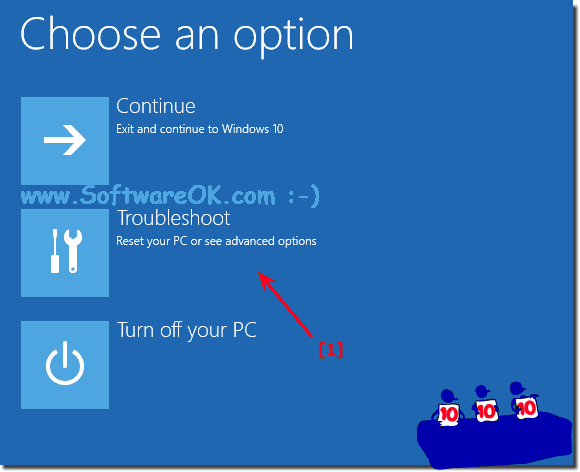
- #EASY SYSTEM RECOVERY WINDOWS 10 HOW TO#
- #EASY SYSTEM RECOVERY WINDOWS 10 INSTALL#
- #EASY SYSTEM RECOVERY WINDOWS 10 UPDATE#
- #EASY SYSTEM RECOVERY WINDOWS 10 WINDOWS 10#
- #EASY SYSTEM RECOVERY WINDOWS 10 WINDOWS#
#EASY SYSTEM RECOVERY WINDOWS 10 WINDOWS#
If Windows will not start, you can use the Recovery Drive to launch System Restore. When a change causes your system to act strangely, you can undo that change by performing a System Restore operation. Figure F Manually creating a restore point is a straightforward process. After you initiate the operation, it will take a few minutes to complete. To manually create a restore point, click the Create button on the System Protection tab and you’ll be prompted to name the restore point. Creating a restore pointĪs I mentioned, you may sometimes need to manually create a restore point before you make changes to your system, such as editing the registry. Figure E If you want to start fresh, you can delete all the current restore points. When you do, you will be prompted to confirm the operation. If you decide that you want to start with a clean slate, you can click the Delete button to delete all the current restore points. This system works well, but if you want to have more restore points available, you can increase the size by adjusting the position of the Max Usage slider. As the allotted space fills up with restore points, System Restore deletes older restore points to make room for new ones. The amount it uses will vary depending on the total size of your hard disk. Figure D You can change System Restore’s default settings.īy default, System Restore is configured to use between 1% and 3% of the space on your hard disk. It’s not recommended, but you can do so if you wish. The first thing you will notice is that you can disable System Restore. Fortunately, doing so is easy.įrom the System Protection tab, select the Configure button to open the Configuration dialog box, shown in Figure D.
#EASY SYSTEM RECOVERY WINDOWS 10 INSTALL#
System Restore is automatically configured when you install Windows 10, but you may want to change its settings. Figure C System Restore lives on the System Protection tab of the System Properties dialog box. Here, you can launch a restore operation, configure System Restore’s settings, and manually create restore points. You’ll then see the System Protection tab of the System Properties dialog box ( Figure C).

Figure B From the System window, select System Protection. To continue, select System Protection on the left side of the screen, as shown in Figure B. The System window offers a plethora of information and commands. Figure A The Quick Link menu includes several commands, including System. Then select System, as shown in Figure A. To bring up this menu, use the + X shortcut. There are several ways to launch System Restore in Windows 10, but the easiest way is to use the Quick Link menu. Fortunately, you can manually create a restore point before you perform those types of operations. System Restore does a good job of automatically creating restore points, but what if you need to make changes to the operating system? For example, maybe you want to implement a technique that involves editing the registry. If something goes awry during such an operation and your system begins behaving oddly, you can use System Restore to bring your system back to the state it was in right before the change was implemented.
#EASY SYSTEM RECOVERY WINDOWS 10 UPDATE#
These snapshots are called restore points and include crucial operating system files and certain parts of the registry that could be altered by the pending change operation.įor example, System Restore will automatically create a restore point when you install a new application or perform a major Windows Update operation. System Restore works by automatically taking snapshots of your system’s state before any operation that makes significant changes to the operating system.
#EASY SYSTEM RECOVERY WINDOWS 10 HOW TO#
As I do, I’ll show you how to manually create a restore point, how to restore your system to an earlier point in time, and how to undo a restore operation. Now, while you can run System Restore from the Recovery Drive, you can also run and configure it from within Windows 10. The last tool to cover is System Restore, which has been around since Windows XP.
#EASY SYSTEM RECOVERY WINDOWS 10 WINDOWS 10#
How to revive your Windows 10 installation with System Image Recovery.Reset your Windows 10 system with the Remove Everything option.Reset your Windows 10 system with the Keep My Files option.Rescue an ailing system: Launch Windows 10 Startup Repair from the Recovery Drive.



 0 kommentar(er)
0 kommentar(er)
